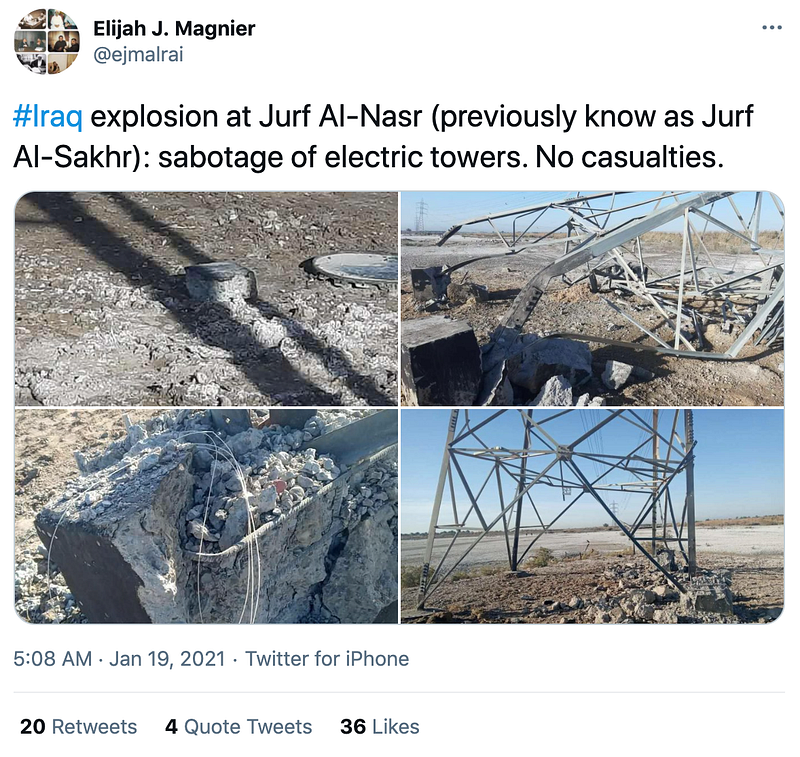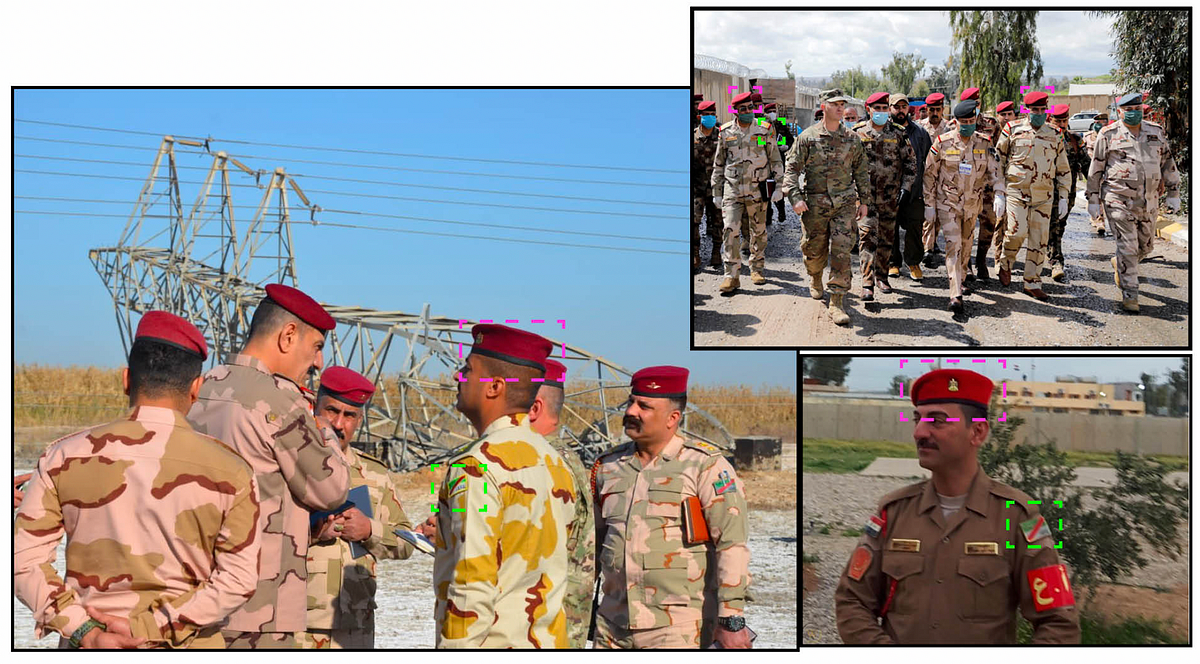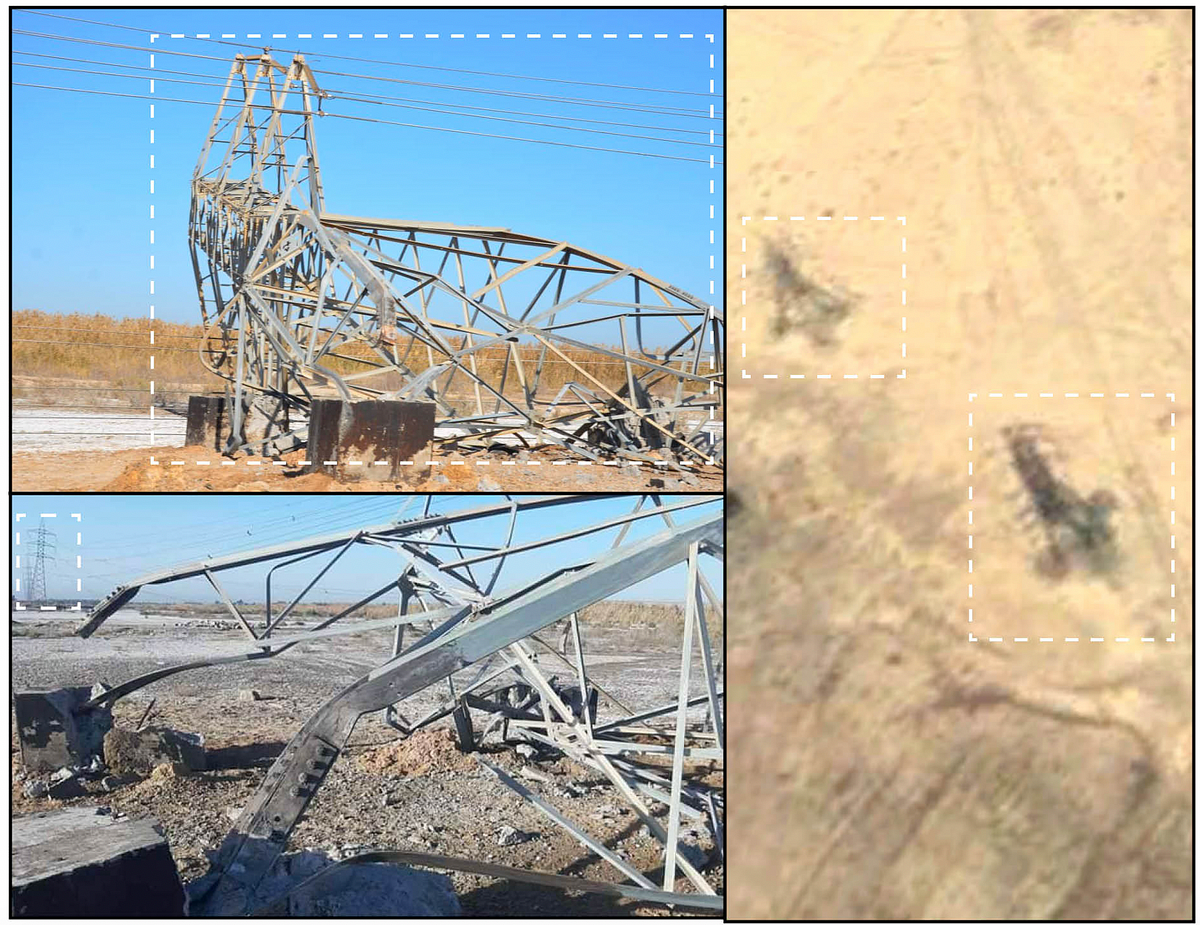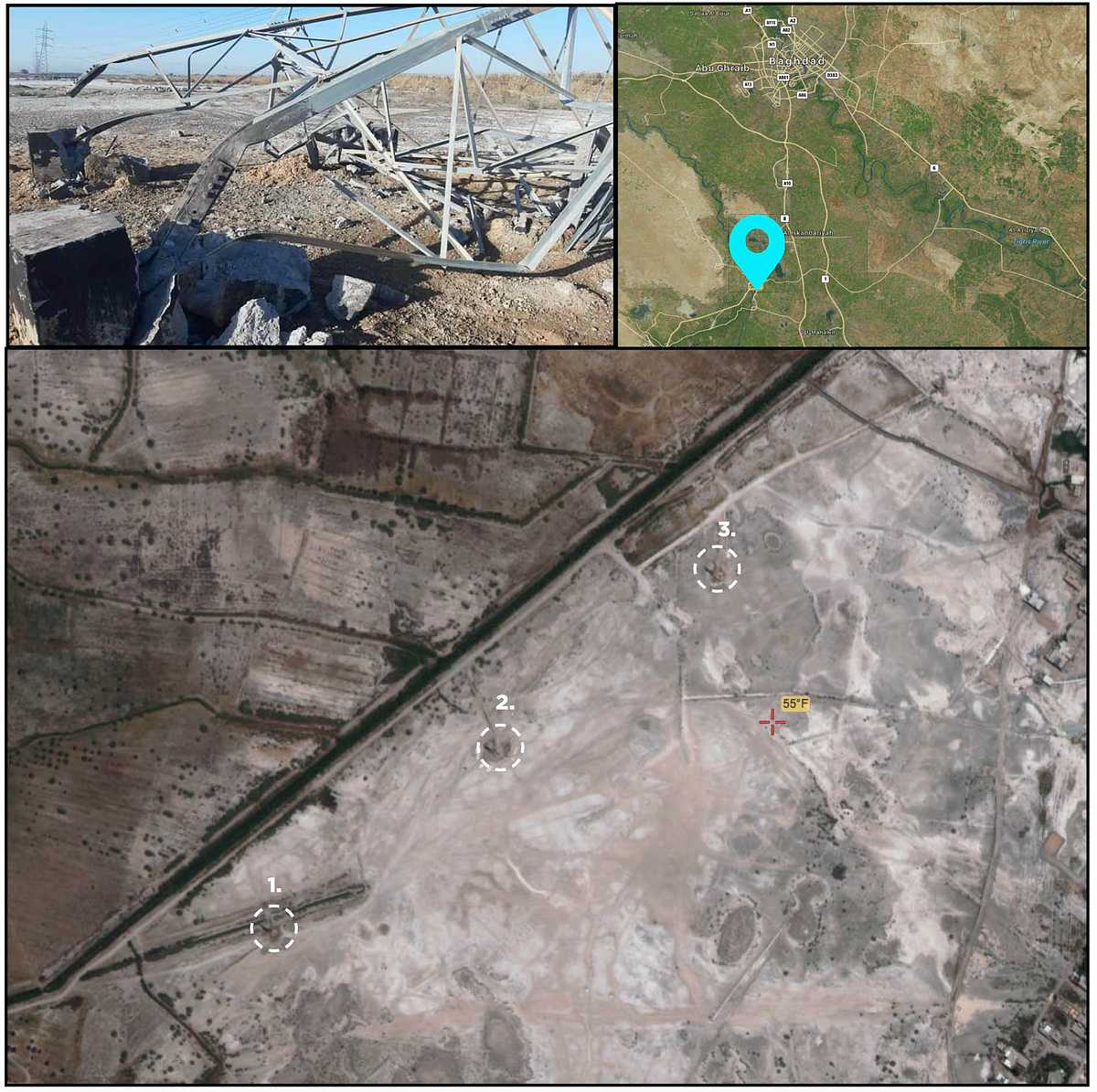Amid claims of U.S. and Israeli airstrikes, open-source evidence suggests sabotage against electricity infrastructure

On the morning of January 19, 2021, news broke of unidentified explosions in Iraq, close to the town of Jurf Al-Sakhr (Jurf Al-Nasr), south of Baghdad. While rumors quickly began circulating on social media that the explosions were the result of U.S. and Israeli airstrikes, open-source evidence does not support the conclusion. Pictures of improvised bombs tied to electricity towers suggested that the attack was likely a sabotage attempt targeting electricity infrastructure.
Surfaced photos
Open-source evidence regarding the incident surfaced on social media on the same day. At least one video claimed to show one of the explosions:

The video did not have enough detail to be geolocated. Unverified rumors claimed that the U.S. was targeting Iraqi military sites and that some of the casualties — reports ranged from six to nine people dead — were Iraqi soldiers.

At the same time, a competing narrative was spreading on Israeli and Kurdish media outlets, which denied both U.S. and Israeli involvement. The U.S. CENTCOM Twitter page and Iraqi Security Media Cell echoed these denials, with the latter stating that Iraqi officials confirmed that the reported incident was an attack on electricity infrastructure.
Photos of damaged and felled electricity towers examined by the DFRLab indicate that the damage was not inflicted by an airstrike. Reverse image search suggests that these photos had not been posted before, meaning they were likely not of a prior incident. Notably, the area immediately surrounding the towers was not damaged, as it would occur in an airstrike. Rather, it seems that the explosions were caused by devices strapped to the bottom of the structures.

In some of the surfaced photos, remains of improvised explosive devices (IED) can be seen. It appears that the explosives were stored in plastic bottles and planted on the foundation of the electricity towers. Not all of the IEDs exploded.

Another set of photos that surfaced showed Iraqi soldiers, wearing the standard Iraqi camouflage, military patches, and red berets of Iraqi military police, inspecting the explosion site.

Lastly, comparison of electricity towers in the region of Jurf Al-Sakhr rendered a match, even though a precise geolocation was not possible.

The geolocation of these photos proved to be difficult due to insufficient detail. The only visible clues as to the location were the light grey-colored gravel terrain with light-colored fields and a few bushes in the background. Twitter user @obretix suggested a likely location south of the town of Jurf Sakhar, about 40 kilometers south of Baghdad. Nonetheless, the DFRLab was not able to corroborate this finding with high confidence based on the details in the photos.

Lukas Andriukaitis is an Associate Director with the Digital Forensic Research Lab;
Follow along for more in-depth analysis from our #DigitalSherlocks.

